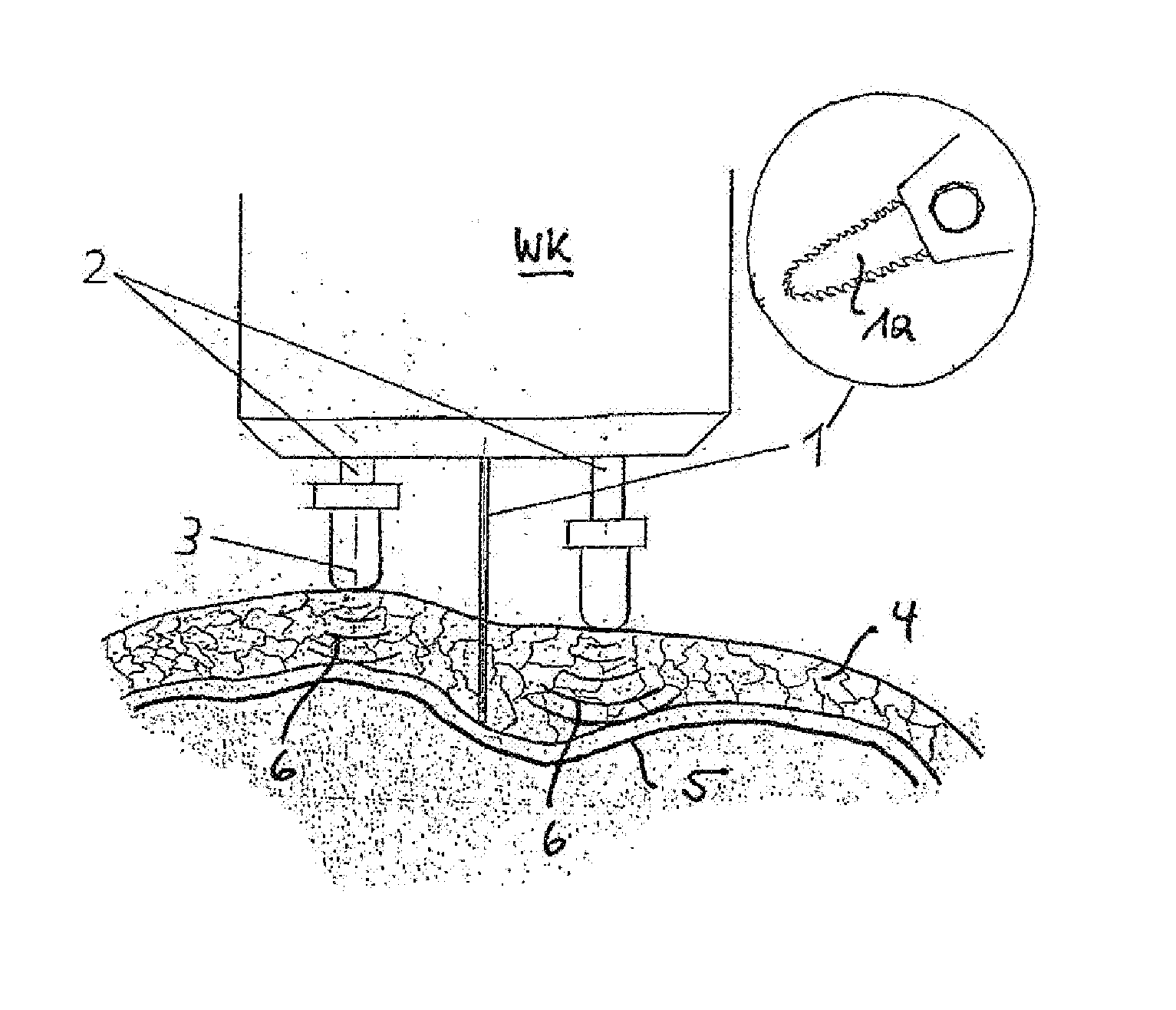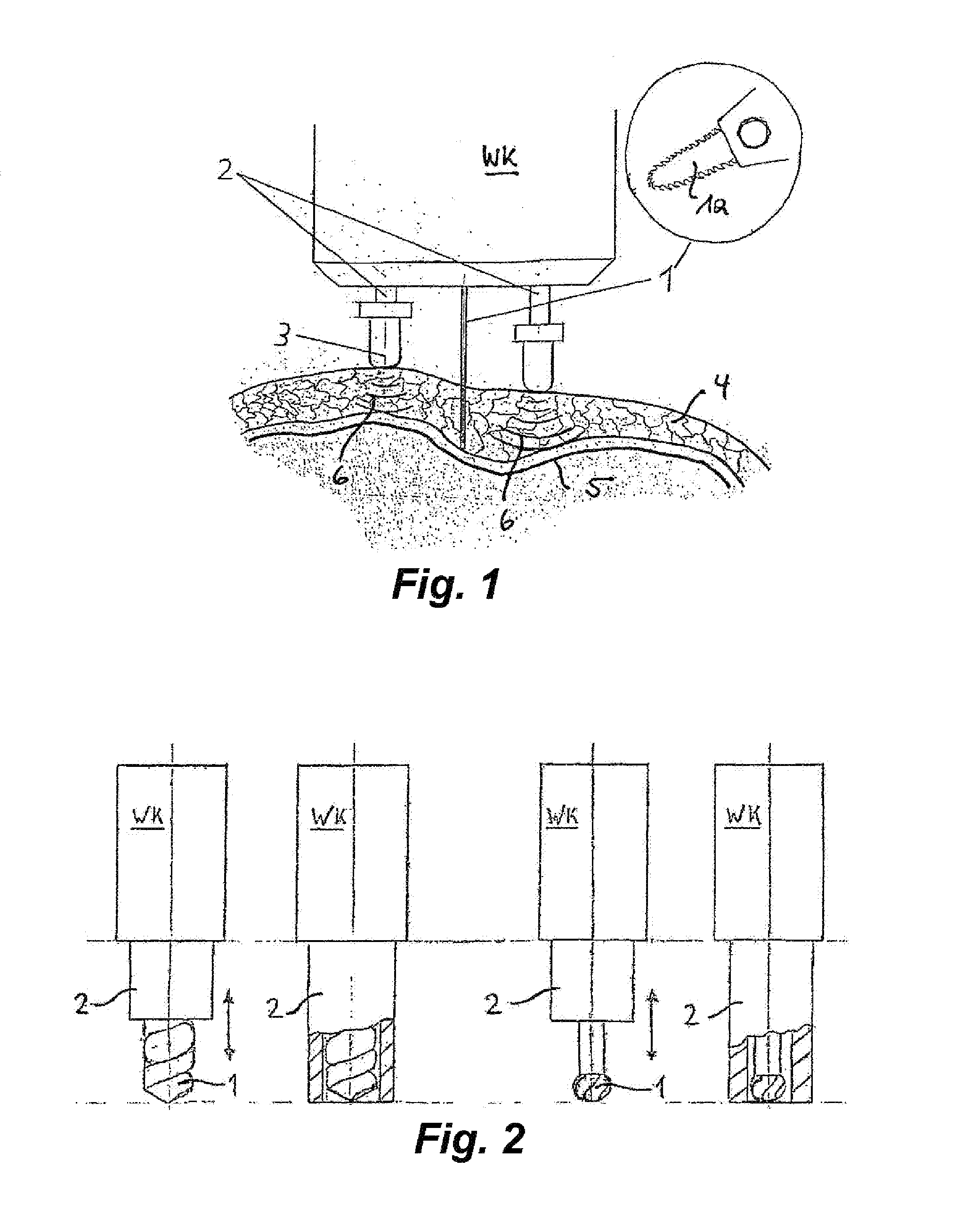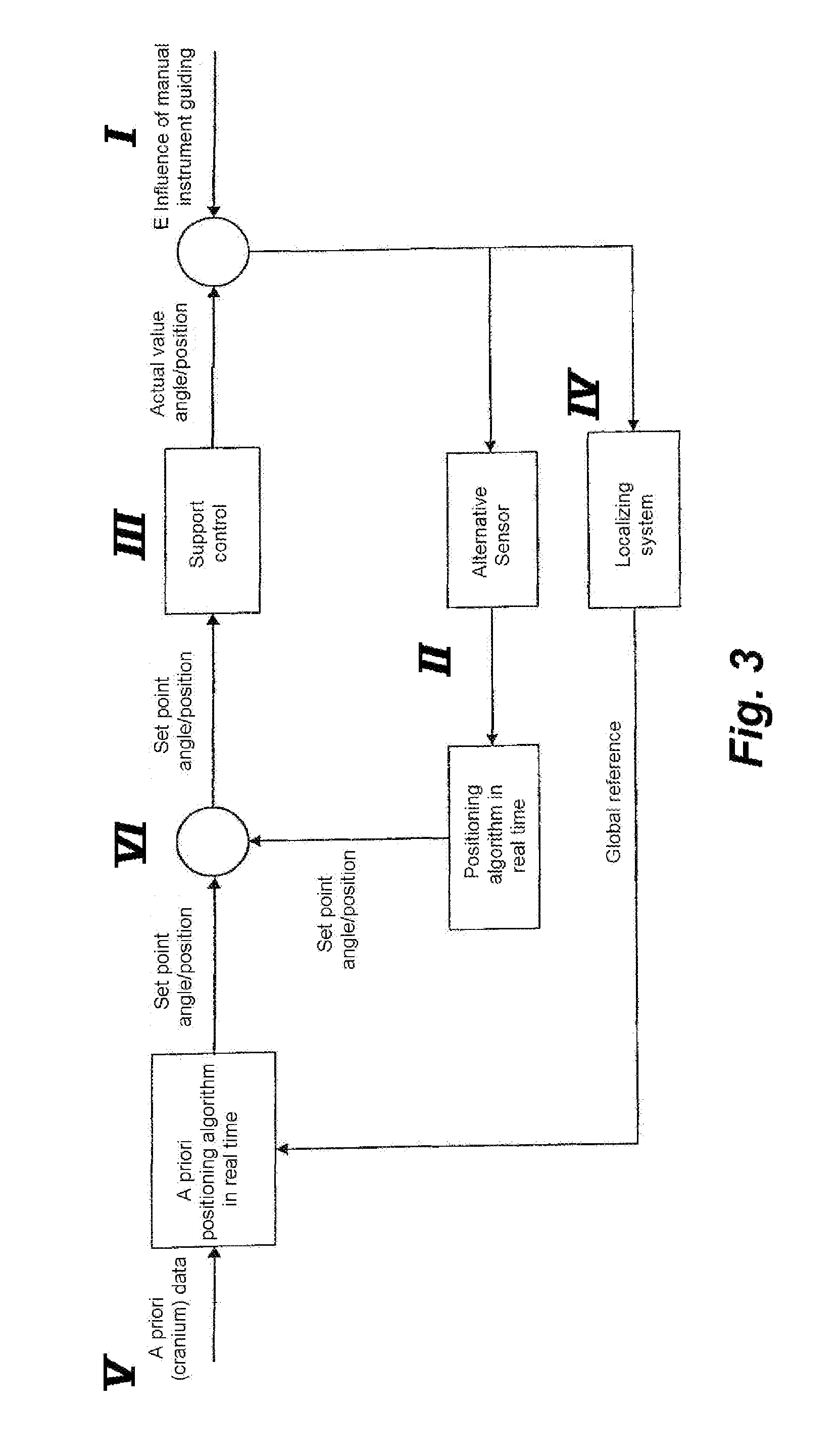Device and method for working material
a technology for working materials and devices, applied in applications, ultrasonic/sonic/infrasonic image/data processing, ultrasonic/sonic/infrasonic diagnostics, etc., can solve the problems of increased risk of infection, postoperative healing of wounds, and extended time, and achieve the effect of reducing the interaction depth of the tool in the plaster
- Summary
- Abstract
- Description
- Claims
- Application Information
AI Technical Summary
Benefits of technology
Problems solved by technology
Method used
Image
Examples
Embodiment Construction
[0057]In a lateral cross section, FIG. 1 shows a tool head WK in accordance with the invention on which is mounted a tool 1 that here is designed as per the explanatory additional illustration as a saw blade 1a in order to thus saw cut into a cranial bone 4 freed of skin on the outside, with a kerf width that corresponds to the thickness of the saw blade.
[0058]In order to prevent splitting open the cranial bone during the cutting process, such that dura mater 5 underneath the cranial bone 4 is injured, here according to the invention the tool head carries two supports 2 that flank the saw blade 1 and thus surround the tool 1. The supports 2 are adjustable by unillustrated actuators within the tool head WK and are pushed out of the tool head by these actuators or can be pulled back into the tool head, so that the position of the lower end of each of the supports 2 can be changed.
[0059]According to one embodiment, this can be done in that the position of the tool 1 is captured by an e...
PUM
| Property | Measurement | Unit |
|---|---|---|
| angle | aaaaa | aaaaa |
| height | aaaaa | aaaaa |
| ultrasound impulses | aaaaa | aaaaa |
Abstract
Description
Claims
Application Information
 Login to View More
Login to View More - R&D
- Intellectual Property
- Life Sciences
- Materials
- Tech Scout
- Unparalleled Data Quality
- Higher Quality Content
- 60% Fewer Hallucinations
Browse by: Latest US Patents, China's latest patents, Technical Efficacy Thesaurus, Application Domain, Technology Topic, Popular Technical Reports.
© 2025 PatSnap. All rights reserved.Legal|Privacy policy|Modern Slavery Act Transparency Statement|Sitemap|About US| Contact US: help@patsnap.com



